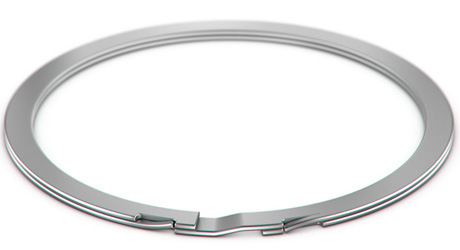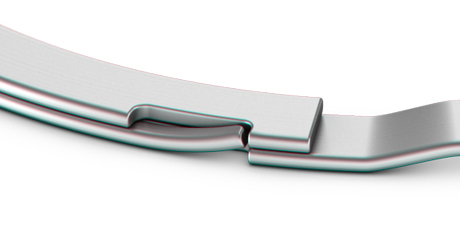Removing a Tab and Slot Self-Locking Retaining Ring

Smalley’s Spirolox(R) retaining rings can be configured to include different provisions or features to better suit application needs. A popular feature for Spirolox rings is the Tab and Slot lock (Figure 1), which provides a mechanical interference allowing the ring to ‘lock’ in place.

Figure 1. Tab and Slot locking self-locking ring
In a Tab and Slot self-locking ring, the tabbed end of the ring will insert into a slot on the opposite turn. As seen in Figure 2 below.

Figure 2. The tabbed end can be seen inserted into the slot.
What Does the Tab and Slot System Do?
The Tab and Slot self-locking system (Figure 3) helps prevent the ring from expanding and/or working out of the groove when rotating. This simple yet highly effective functionality has made the Tab and Slot a popular and effective retaining ring feature for high RPM applications.

Figure 3. Flat view of Tab and Slot from the side.
How to Remove a Tab and Slot Ring
Due to how tightly the tab locks into the slot, unlocking it for ring removal will be challenging. That is by design. The ring design is intended to be a permanent fixture in an assembly, fulfilling its duty of self-locking with certainty. If the ring needs to be removed for whatever reason, then a flathead screwdriver can be used to compress the tab so that it does not engage the slot. Special care must be taken not to damage the assembly when compressing the tabs. Once that is done, the ring can be removed in the normal manner.
Note that once a Tab and Slot ring has been inserted onto a shaft, it will no longer be usable after removal. When the tab is flattened to remove the ring, it will either break or significantly weaken, thus becoming unusable. This is why the ring cannot be used once removed.
If your application requires the removal and reuse of the ring in the application, please consider Smalley’s Revolox(R) self-locking ring. Please contact our engineering department with any questions about self-locking ring removal or spiral retaining ring removal in general.
Next Steps





Connect With Us